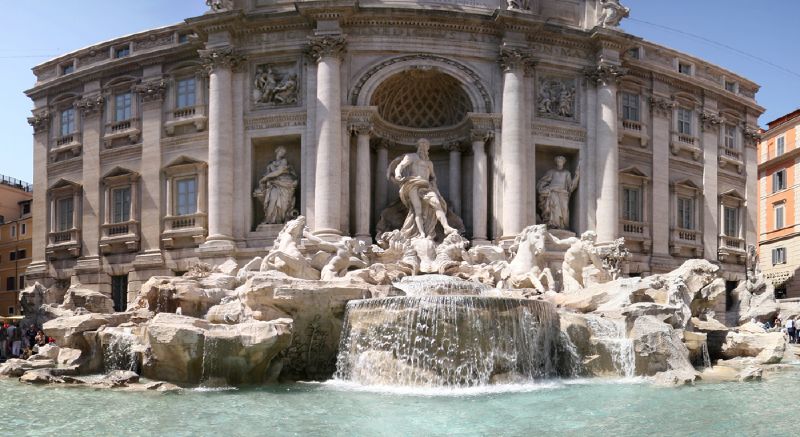
"Baroque and the terminal used by art historians to describe the dominant style in the period 1600 to 1750. Its original meaning of "irregular, twisted, grotesque and bizarre," has now been extensively revised. The Baroque style was founded in the late sixteenth century, but was born in Rome around the third decade of the seventeenth century. "
Baroque Painting
Extremely varied and complex appears to us the painting of the Baroque period, the Counter-Reformation church became the main buyer for the paintings. Focusing on the persuasive power of beauty The church found in the art the right way to bring the world to the Christian faith as it was able to influence the emotions.
In this period, therefore, intensify the representations of sacred scenes are painted especially those persons who had challenged the thought reform, for example the cult of Mary.
The Palaces and especially the churches were decorated with huge and magnificent frescoes that were close to reality thanks to the absolutely natural representation of the characters. This gives the sacred scenes represent a character that brings credibility to the faithful.
Great importance was given to the decoration of the ceilings, the Baroque painters, thanks to the mastery of perspective could broaden the opportunities for creating architectural spaces unreal uniting heaven and earth, for example the ceiling of the church of St. Ignatius to Rome painted by Andrea Pozzo in which real figures sway suspended in the air between heaven and earth, creating an effective trompe l'oeil.
There were two art movements that were developing in the seventeenth century: the naturalistic with the classic one proposed by Caravaggio and the Carracci school.
Caravaggio introduced in his paintings the reality of every day, even when he painted religious subjects, he sought the truth, representing the figures of Christ, the Virgin Mary, the apostles, using as a model for ordinary people, such as those that could meet at that time the streets, making them emerge from a particular light. This painting
naturalist spread rapidly in Italy in the first twenty years of the seventeenth century, the most important representatives include artists such as Orazio Gentileschi and his daughter Artemisia, Bartolomeo Manfredi and Battistello Caracciolo, as well as many foreigners who worked in Italy, including the French painter Valentin de Boulogne and English Jusepe de Ribera.
The school that developed around the Carracci instead seeks to return to the principles of clarity, monumentality, and balance typical of the Renaissance.
Of the three Carracci, Ludovico, Agostino and Annibale was the latter to be more successful. This style was adopted by classical artists such as Guido Reni and Domenichino.
Baroque architecture
Baroque architecture expressed in the monumental forms. Many cities in this period take on a different aspect: creating new roads tearing down the old medieval quarters. The palaces, the squares are constructed with a strong dramatic intent, aiming to arouse the viewer wonder and admiration.
The buildings of the nobles are divided into several sections around a garden adorned with fountains, statues, paths and waterfalls that were designed with their spectacular to celebrate itself the ruling class. As for the churches, we prefer the plant or central nave with majestic domes and roofs. The facade is covered with sculptures has a feature highly scenic.
Among the major architects of the Baroque period there was Carlo Maderno, who built the extension the nave of St. Peter's and completed the facade that had been begun by Donato Bramante. More important was
architect Borromini, among his accomplishments, a splendid example of Italian baroque, include the facade of San Carlo alle Quattro Fontane in Rome, with its concave and convex taken inside the church.
was active in Venice Baldassarre Longhena realizes that the church of Santa Maria della Salute, Guarino Guarini in Turin built the Chapel of the Holy Shroud.
in Naples between the most emblematic buildings include the cloister of the Certosa di San Martino, the spire of San Gennaro and the facade of Santa Maria della Sapienza.
The most prominent architects of Baroque art are:
- Burromini,
- Salvi
- Bernini
- Fontana
- Foggini
0 comments:
Post a Comment